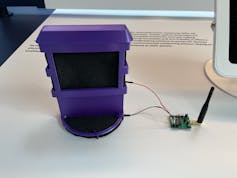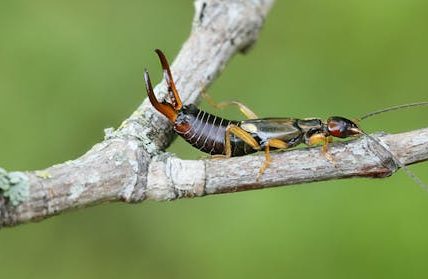What will batteries of the future be made of? Four scientists discuss the options – podcast
The majority of the world’s rechargeable batteries are now made using lithium-ion. Most rely on a combination of different rare earth metals such as cobalt or nickel for their electrodes. But around the world, teams of researchers are looking for alternative – and more sustainable – materials to build the batteries of the future.
In this episode of The Conversation Weekly podcast, we speak to four scientists who are testing a variety of potential battery materials about the promises they may offer.
When lithium-ion batteries emerged in the 1990s, they were a huge breakthrough, says Laurence Hardwick, a professor of electrochemistry at the University of Liverpool in the UK. He explains that lithium-ion batteries “ became commercialised at the same time as the mobile electronics industry really took off”. But their subsequent use in electric cars now presents “a challenge of scale”, given the use of rare earth minerals within their components.
Hardwick is director of the Stephenson Institute for Renewable Energy, named after the 19th-century engineer George Stephenson – builder of the world’s first inter-city rail link between Liverpool and Manchester, which passed close by to the University of Liverpool’s campus.
Hardwick’s work focuses on what other materials could be used either in conjunction with lithium, or on their own, to diversify battery manufacturing away from rare earth metals. Part of this includes research on solid-state batteries, which use ceramic plates rather than a solvents to conduct the ions that provide the charge. “ Solid-state batteries offer a lot of potential energy-gaining benefits and safety benefits,” he says.
Sodium-ion is also being touted as a potential alternative to lithium-ion batteries. Robert Armstrong, principal research fellow in chemistry at the University of St Andrews in Scotland, is part of a consortium of UK-based researchers working on questions around sodium-ion batteries, including what type of electrodes and electrolytes work best.
Like potassium-ion, which is also a potential battery candidate, sodium-ion is heavier than lithium-ion, but Armstrong says sodium is fairly evenly abundant: “So you don’t have the supply issues that might affect lithium-ion, and you’re not like to see the same price volatility.”
Some Chinese manufacturers in China, such as BYD and CATL, are pushing ahead with sodium-ion batteries for cars, despite the fact they’re heavier than lithium-ion batteries. There’s also interest in sodium-based technology in countries in the Arabian Gulf that use desalination plants. “They’ve got all this sodium kicking around. Why not make use of it?” says Armstrong.
Batteries which biodegrade
Terracell on display at the Prototypes for Humanity 2024 showcase in Dubai.
Gemma Ware, CC BY-SA
Other researchers are looking at how to make batteries out of plant-based materials that are biodegradable. Bill Yen, a PhD candidate in electrical engineering at Stanford University, is part of a team who are developing Terracell, a type of battery that generates power using microbes in the soil.
Their inspiration was how to power environmental sensors in damp environments without leaving lots of electronic waste behind at the end of the battery’s life. Terracell won the energy category of the Prototypes for Humanity 2024 event in 2024 in Dubai, a showcase for sustainable solutions to the world’s problems.
Also in Dubai was Ulugbek Asimov, a professor of mechanical and construction engineering at Northumbria University in the UK, who is developing BioPower Cells, a type of rechargeable battery made from waste products such as coffee which doesn’t contain any rare earth metals. “ And at the end of its lifespan, we drop it into boiling water and it will be turned into liquid ionic fertilizer,” Asimov said.
Listen to The Conversation Weekly to hear the conversations with these four scientists about their work and the batteries of the future.
Applications are now open for early career researchers to submit their projects for the Prototypes for Humanity 2025 awards and showcase in Dubai.
This episode of The Conversation Weekly was written and produced by Gemma Ware with assistance from Mend Mariwany and Katie Flood. Mixing and sound design by Eloise Stevens and theme music by Neeta Sarl.
Listen to The Conversation Weekly via any of the apps listed above, download it directly via our RSS feed or find out how else to listen here. A transcript of this episode is available on Apple Podcasts or Spotify.
Bill Yen has received funding for his work on Terracell from National Science Foundation, the Agricultural and Food Research Initiative and support from the Alfred P. Sloan Foundation,VMware Research, and 3M. Laurence Hardwick has received funding from the Faraday Institution and is a member of the Royal Society of Chemistry. Ulugbek Asimoz has received funding from the Northern Accelerator Proof of Concept to develop certain stages of the BioPower Cells project, which will be a spinout company from Northumbria University in the future. Robert Armstrong has received funding from the Faraday Institution and funding from EPSRC and Leverhulme Trust.




